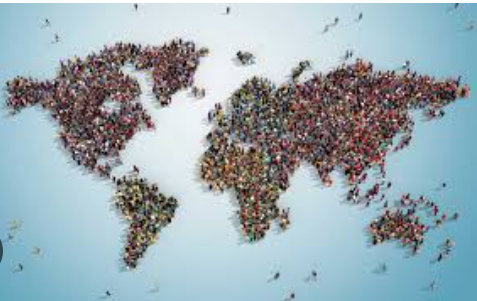

Introduction to Migration and Population Dynamics
Migration is a phenomenon as old as humanity itself. It shapes cultures, economies, and societies across the globe. As people move from one place to another in search of better opportunities or safety, they take with them their hopes, traditions, and dreams. This movement not only transforms individual lives but also plays a vital role in reshaping population dynamics in both host and origin countries.
Today’s world witnesses unprecedented levels of migration due to conflicts, climate change, economic disparities, and social factors. Millions are on the move for various reasons—some fleeing persecution while others seek prosperity or education. But what does this mean for global populations? How do these shifts affect demographics?
Understanding the impact of migration goes beyond statistics; it requires looking at historical contexts and current trends that shape our societies today. Whether we’re examining bustling urban centers filled with diverse communities or rural areas facing depopulation challenges—migration holds sway over where we live and how we coexist.
Join us as we explore the intricate relationship between migration and population dynamics worldwide. Let’s uncover its historical roots, assess its far-reaching consequences across different regions, and gaze into future predictions regarding this ever-evolving landscape.
Historical Perspectives on Migration and its Impact on Population
Migration has long been a driving force in shaping human societies. From ancient times, people have moved for resources, safety, and opportunity. The migration of tribes and communities led to the spread of cultures and languages.
In the medieval period, trade routes facilitated movement across continents. This not only increased economic interactions but also transformed population demographics in various regions. Cities grew as migrants sought better livelihoods.
The age of exploration further intensified these movements. Colonization resulted in significant shifts in population dynamics worldwide. It often brought about conflict but also cultural exchange.
More recently, the industrial revolution spurred urban migration from rural areas. People flocked to cities seeking jobs, altering the social fabric dramatically. Each chapter of history reveals how migration reshapes populations—bringing diversity while posing unique challenges for integration and cohesion within societies.
The Economic, Social, and Political Consequences of Migration
Migration brings a mix of economic benefits and challenges. On one hand, it fills labor shortages in various industries. This contributes to the growth of economies, especially in regions facing demographic decline.
On the social front, migration fosters cultural exchanges that enrich communities. Diverse perspectives often lead to innovation. However, it can also create tension among different groups as they adapt to new realities.
Politically, migration shapes policies and international relations. Nations grapple with balancing humanitarian obligations against domestic concerns. This dynamic influences elections and public sentiment significantly.
Each movement of people impacts local infrastructures too, sometimes straining resources like housing and healthcare systems. Yet these changes can spark urban revitalization when managed well.
The consequences are complex but undeniable; migration weaves itself into the fabric of societies worldwide in multifaceted ways.
Case Studies: Examining the Effects of Migration on Population in Different Regions
Migration manifests in varied forms across the globe, shaping demographics uniquely. In Europe, for instance, an influx of refugees has revitalized declining birth rates in several nations. Cities like Berlin now reflect a rich tapestry of cultures and languages.
In contrast, rural areas in the United States face depopulation as younger generations flock to urban centers. This shift presents challenges for local economies and community services.
Meanwhile, countries like Canada embrace immigration as a strategy to bolster their workforce. The diverse skills brought by newcomers help fuel innovation and economic growth.
Asia showcases its own migration patterns with millions relocating from rural regions to metropolises such as Shanghai and Delhi. This transition often leads to overcrowding but also sparks development opportunities.
Each case reveals how migration is not merely about movement; it reshapes societal structures while influencing cultural identities worldwide.
Future Predictions and Challenges for Managing Global Population Dynamics through Migration
As we look to the future, the role of migration in shaping population dynamics will become increasingly complex. Climate change, armed conflicts, and economic disparities are likely to drive millions from their homes, creating both opportunities and challenges for host nations.
Countries will need innovative policies to manage these influxes effectively. Balancing humanitarian needs with local infrastructure demands will be crucial.
Technological advancements may help streamline integration processes but also pose risks around data privacy and security. The social fabric of communities could either strengthen or fray under pressure.
Moreover, xenophobia and nationalism might rise in response to perceived threats from newcomers. Addressing these tensions while promoting diversity is essential for fostering inclusive societies.
Navigating this intricate landscape requires collaboration between governments, NGOs, and local communities. Each stakeholder has a vital part to play in ensuring that migration becomes a catalyst for positive growth rather than division.
Conclusion: The Crucial Role of Migration in Shaping Our World’s Population
Migration is a powerful force that has shaped human history and continues to influence our world today. It acts as a catalyst for change, triggering shifts in population dynamics across regions. As people move in search of better opportunities, they bring with them diverse cultures, ideas, and skills.
The impact of migration can be seen in economic growth and innovation. Regions benefit from the influx of talent that drives industries forward. Socially, communities become more vibrant through cultural exchanges. However, these changes also come with challenges—straining resources and sometimes leading to tensions within host communities.
Looking ahead, managing migration will require thoughtful strategies that embrace its benefits while addressing potential drawbacks. Policymakers must balance compassion with pragmatism to create inclusive societies where all individuals can thrive.
Understanding the role of migration is essential for anyone interested in the dynamics of our global population landscape. It remains a fundamental aspect shaping not just demographics but also the future trajectory of nations around the world.
